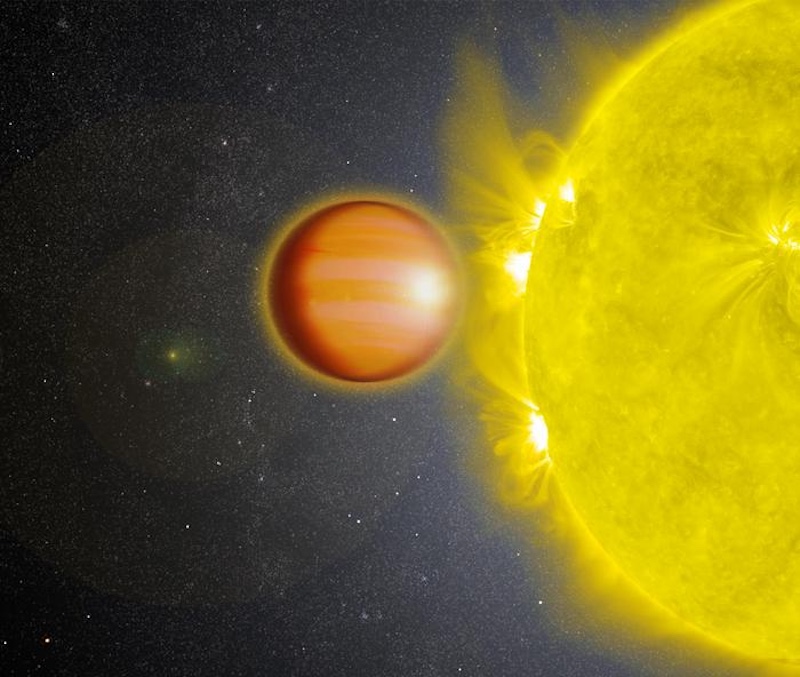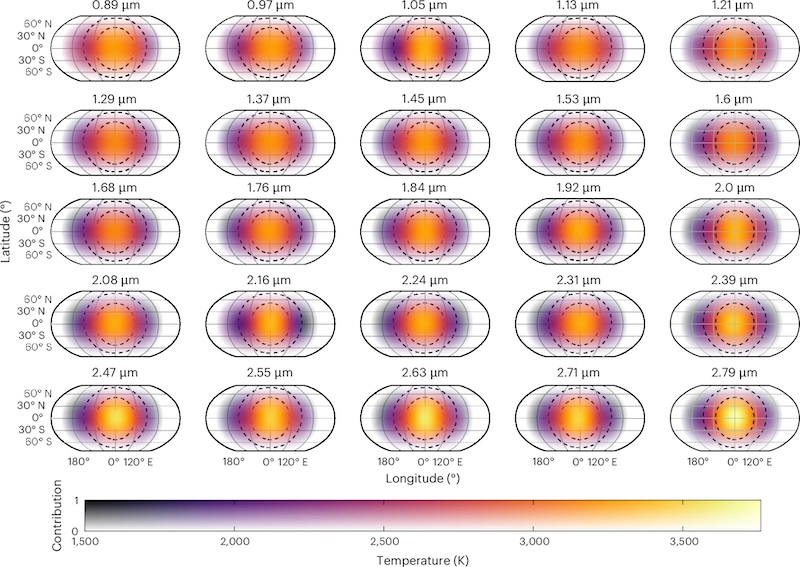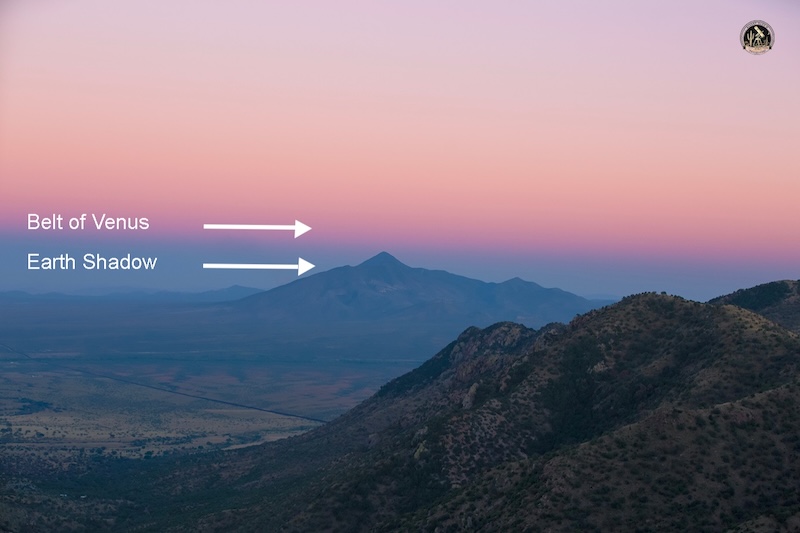Now Reading: 1st 3D temperature map of exoplanet shows dynamic atmosphere
-
01
1st 3D temperature map of exoplanet shows dynamic atmosphere
1st 3D temperature map of exoplanet shows dynamic atmosphere


- WASP-18b is a hot Jupiter exoplanet about 400 light-years from Earth. The same side of this scorching-hot planet always faces its star.
- Astronomers created a 3D temperature map of WASP-18b. It is the 1st such map of an exoplanet ever achieved. What does it show?
- The map reveals distinct variations in temperature and chemical composition of the atmosphere on the side of the planet facing its star.
1st 3D temperature map of exoplanet
For the first time, astronomers have created a three-dimensional (3D) temperature map of a distant exoplanet. The planet, WASP-18b, is a scorching ultra-hot Jupiter about 400 light-years away. The researchers, co-led by the University of Maryland in College Park and Cornell University in Ithaca, New York, said on October 28, 2025, that the map revealed three distinct temperature zones. This is the first time astronomers have used a technique called 3D eclipse mapping, or spectroscopic eclipse mapping.
The new study uses data from NASA’s James Webb Space Telescope. With the same data, some of the researchers in this study had previously created a 2D map of the same planet in 2023.
WASP-18b has a mass equivalent to 10 Jupiters. Being very close to its star, it completes an orbit in only 23 hours. Consequently, this also means it is extremely hot, with a temperature of almost 5,000 degrees Fahrenheit (2,760 degrees Celsius).
The peer-reviewed results of the new study were published in Nature Astronomy on October 28, 2025.
#UMD astronomer Megan Weiner Mansfield co-led the creation of the first 3D temperature map for a distant exoplanet.Published in Nature Astronomy, the team's technique lays the groundwork for more detailed future explorations of faraway planets. ?
— UMD Science (@umdscience.bsky.social) 2025-11-04T23:19:02.257Z
Mapping a distant exoplanet
Astronomers used an eclipse mapping technique so they could see the exoplanet’s temperatures in 3D. Despite the star and planet’s huge size differences, astronomers can detect tiny changes from the light of a planet as its star starts to pass in front of – or eclipse – the planet. The press release explained:
Scientists can link minute changes in light to an exoplanet’s specific regions to produce a brightness map that, when rendered in multiple colors, can map out temperatures in latitude, longitude and altitude.
As co-lead author Megan Weiner Mansfield at the University of Maryland said:
This technique is really the only one that can probe all three dimensions at once: latitude, longitude and altitude. This gives us a higher level of detail than we’ve ever had to study these celestial bodies.
A map of the exoplanet’s atmosphere
Since WASP-18b is a gas giant planet, astronomers can only map its outer atmosphere. But the mapping can reveal variations in the clouds and temperature of the atmosphere. Ryan Challener, the other co-lead author at Cornell University, said:
Eclipse mapping allows us to image exoplanets that we can’t see directly, because their host stars are too bright. With this telescope and this new technique, we can start to understand exoplanets along the same lines as our solar system neighbors.

Observing in many wavelengths
For the previous 2D map, researchers used only one wavelength of light. But the new 3D map uses many different wavelengths. The Webb telescope’s Near-Infrared Imager and Slitless Spectrograph (NIRISS) instrument made the observations. Various colors in the map refer to different temperatures and altitudes in the planet’s atmosphere. As Challener explained:
If you build a map at a wavelength that water absorbs, you’ll see the water deck in the atmosphere, whereas a wavelength that water does not absorb will probe deeper. If you put those together, you can get a 3D map of the temperatures in this atmosphere.
Distinct regions in the atmosphere
Overall, the results show that WASP-18b has distinct regions or zones in its atmosphere on the dayside of the planet. WASP-18b is tidally locked to its star. This means that the same side of the planet always faces the star. That’s the planet’s dayside. This is similar to how the same side of the moon always faces Earth. On WASP-18b, the regions vary in both temperature and chemical composition.
Also, in the area where the light from the star most directly hits the planet, there is a “hot spot.” A colder “ring” surrounds the hot spot. The researchers said the hot spot and ring are due to winds not being strong enough to redistribute the heat from the hot spot into the surrounding atmosphere. In addition, there is less water vapor in the hot spot than the average for the planet overall. This is the first time such variations have been mapped on a single exoplanet. Mansfield said:
We’ve seen this happen on a population level, where you can see a cooler planet that has water and then a hotter planet that doesn’t have water. But this is the first time we’ve seen this be broken across one planet instead. It’s one atmosphere, but we see cooler regions that have water and hotter regions where the water’s being broken apart. That had been predicted by theory, but it’s really exciting to actually see this with real observations.


Using the 3D temperature map for more hot Jupiters
Now, the researchers want this 3D mapping technique to be extended to other hot Jupiters as well. And indeed, astronomers have already found hundreds of them. It is also hoped that astronomers will be able to produce similar 3D maps of smaller rocky exoplanets, too. That would be exciting, because some of them could be potentially habitable for life. As Mansfield explained:
It’s very exciting to finally have the tools to see and map out the temperatures of a different planet in this much detail. It’s set us up to possibly use the technique on other types of exoplanets. For example, if a planet doesn’t have an atmosphere, we can still use the technique to map the temperature of the surface itself to possibly understand its composition. Although WASP-18b was more predictable, I believe we will have the chance to see things that we could never have expected before.
Last February, another group of astronomers announced the first 3D weather map of an exoplanet, another hot Jupiter called WASP-121b. That one, however, was a weather map, while the new one is a temperature map. The researchers used the ESPRESSO instrument on the Very Large Telescope (VLT) in Chile to make the previous weather map.
Bottom line: Astronomers have created the first 3D temperature map of a distant exoplanet. The planet, WASP-18b, is a scorching ultra-hot Jupiter 400 light-years away.
Source: Horizontal and vertical exoplanet thermal structure from a JWST spectroscopic eclipse map
Read more: Double hot Jupiters: How do these rare gigantic worlds form?
Read more: Our 1st 3D weather map from a distant exoplanet
The post 1st 3D temperature map of exoplanet shows dynamic atmosphere first appeared on EarthSky.
Stay Informed With the Latest & Most Important News
Previous Post
Next Post
-
 012024 in Review: Highlights from NASA in Silicon Valley
012024 in Review: Highlights from NASA in Silicon Valley -
 02Panasonic Leica Summilux DG 15mm f/1.7 ASPH review
02Panasonic Leica Summilux DG 15mm f/1.7 ASPH review -
 03How New NASA, India Earth Satellite NISAR Will See Earth
03How New NASA, India Earth Satellite NISAR Will See Earth -
 04And Thus Begins A New Year For Life On Earth
04And Thus Begins A New Year For Life On Earth -
 05Astronomy Activation Ambassadors: A New Era
05Astronomy Activation Ambassadors: A New Era -
06SpaceX launch surge helps set new global launch record in 2024
-
 07Space Force plans new ‘Futures Command’ amid pressure to speed up modernization
07Space Force plans new ‘Futures Command’ amid pressure to speed up modernization




















